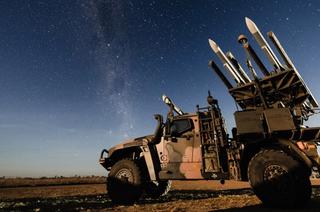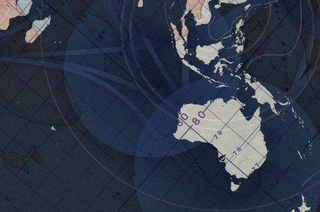On 11 July 2025, the US Navy, Royal Australian Navy (RAN), and Japan Maritime Self-Defense Force (JMSDF) signed a trilateral logistics agreement in an effort to deepen maritime cooperation and foster security and stability in the Indo-Pacific. The agreement covers many areas of cooperation, including reloading missile systems, flexible refuelling (the ability to refuel naval vessels at sea without docking), and information and technology sharing via strengthened trilateral collaboration.
The US Navy’s Vice Admiral Jeff Jablon, who signed the pact aboard the USS America during a port visit in Brisbane alongside his Australian and Japanese counterparts, said that “sustainment in depth is a primary objective” of the agreement. The agreement’s success can be measured by interoperability and interchangeability in what Jablon calls the five Rs of sustainment — “resupply, rearm, refuel, revive in medical care, and repair ships.” In other words, success depends on how well the three navies can synchronise their actions and data, as well as whether their systems and forces can rely on one another. Signed just before the 2025 Talisman Sabre military exercises between 19 nations, this pact enables the three countries to work trilaterally on logistics initiatives both during and after the drills.
What is the geopolitical context?
The geopolitical backdrop to these developments is impossible to ignore. For example, the security agreement served as an important signal of continuity and normalcy amidst disputes over trade and defence spending in both alliance relationships. In July 2025, US President Donald Trump announced an agreement with Japan in which the United States would lower a threatened 25% tariff to 15% (still higher than the universal rate of 10%), accompanied by a Japanese promise to invest US$550 billion in the US economy. In response to the 10% tariff levied on Australia by the United States in April, Prime Minister Anthony Albanese said that this was “not the act of a friend” but also ruled out reciprocal action.
Meanwhile, the Australia-China relationship continues to be a mutually dependent but strained dynamic, with Albanese having made his second official visit to China in recent weeks. China is Australia’s largest two-way trading partner. Deterrence in the South China Sea may aim — in part — to protect trade routes from China, but Australia’s trade routes also go to China. Additionally, while the United States has not made an outright commitment to defend Taiwan in the case of a Chinese invasion, US government officials have asked Australian and Japanese defence officials to specify what military support they would be willing to offer Taiwan in an attack. The integration of decision-making as well as military systems and logistics through this security agreement may further the obligation, expectation, or probability that Australia will support the defence of Taiwan.
This agreement marks a turning point in allied deterrence in the Indo-Pacific since it is the first trilateral security pact implemented under this framework.
Why it matters
The US Navy, JMSDF, and RAN “routinely collaborate on a bilateral basis… under a strategic dialogue framework that has been in place for several years.” Thus, this agreement marks a turning point in allied deterrence in the Indo-Pacific since it is the first trilateral security pact implemented under this framework. Its signing comes as the Trump administration is increasingly shifting focus to deterring China in the Indo-Pacific and, in particular, the South China Sea. The development of a functional minilateral security architecture will ramp up operational readiness and efficiency in the case of a Chinese invasion of Taiwan or any other contingency. Refuelling at sea, for example, is crucial to maintaining naval presence and the capability to respond to emergency situations.
However, the pact’s impacts are not limited to wartime. Improved information flow, relationship building and more coherent routine sustainment also stand out as benefits that will drastically enhance the efficiency of day-to-day peacetime interactions between the three countries’ navies. Geographically, Australia’s northern military bases of Darwin and Tindal could provide the logistical interoperability for Japan to operate in the Southern Indo-Pacific and for Australia to more deeply engage with Northeast Asia. This could link Australian and Japanese naval power with a broader coalition framework of allied deterrence across the region.
Trilateral cooperation between Japan, Australia and the United States is not new. Leaders and security documents from the three countries recognise one another as significant partners in regional deterrence. Trilateral Defence Ministers’ Meetings, joint exercises, and agenda-setting are commonplace. However, this logistical agreement is the first to operationalise and integrate this collaboration within a trilateral framework.
Overall, the trilateral logistics agreement signed on the USS America is an important step in operationalising trilateral naval cooperation and strengthening commitments to regional security in the Indo-Pacific. Australia is not just preparing for hypothetical conflict scenarios but embedding itself within a more agile and resilient security network. Yet, as Canberra steps deeper into minilateral military frameworks, it must also navigate the risks of strategic entrapment and ensure that national interests remain clearly articulated and preserved.





